Best by Broan Range Hood (WPP9) v Vent-A-Hood (Magic Lung)?
Joe
2 years ago
last modified: 2 years ago
Featured Answer
Comments (51)
Joe
2 years agoRelated Discussions
help! vent a hood magic lung vs. m series or other
Comments (6)I just finished struggling with the same issue. There seems to be a great deal of controversy about the magiclung and the ease of cleaning. I have spoken to some owners and they love them. As to their claim of their 600CFM being equal to other baffle or screen filter hoods rated at 900 CFM that appears to be valid based on two factors. First, there is at least a 20% loss due to the filters and second, many other units use a 7" or 6" duct further reducing their effective rate while VAH uses an 8" duct. All of these numbers are ideals that are never achieved in real world application so you have to take them as relative comparisons and not much more. I finally chose the Modern-Air duct as the best compromise as it uses an 8" duct, has an excellent reputation (made here in CA where I live) and very high quality construction and polished baffles with smooth rather than sharp edges. It was a little less than the VAH though that was not the deciding factor....See Morecfm question; vent-a-hood insert w/magic lung blower
Comments (4)If the function of the hood were to air out the house, then the number of burners running at once might determine the desired flow rate. But that is not how hoods are intended to be used when cooking. The hood is intended to immediately capture the rising and expanding effluent (from any burners) and then contain the effluent using sufficient air velocity at every point under the baffles to both contain and partially degrease the rising effluent as it winds past the baffles. To do this the air velocity generated by the hood blower has to be high enough that smoke not "reflect" out of the hood aperture when it reaches it and finds a restriction. Uprising velocity can be 3 ft/s. At the very least the baffle gaps need this flow rate to assure containment. My rule of thumb is to take the capture aperture area in square feet and multiply by 90 cfm/sq.ft. This will be the desired actual achievable flow rate. No blower system will achieve its rated flow rate in a real environment. Even if we give VAH credit for an actual flow rate of an entire hood and blower assembly (in this case 600 cfm or 1200 cfm), once the ducts and make-up air (MUA) restrictions are included the actual flow rate reduces. And no information has ever crossed my attention horizon that specifies how VAH measure their purported flow rates, so we can't be sure that they are anything other than magic numbers. If I were to use a VAH in this context, I would buy the 1200 cfm rated unit and hope that I could run it at less than full speed for reduced noise and still achieve capture and containment of hot rising effluent from pans, griddles, or whatever. Boiling eggs will not require this level of flow rate (or any for that matter). But unless the 48-inch range is purely a poser installation, at some point you will use it to cook something that generates grease and smoke. Even capturing much of the oven output when it is opened will require a decent flow rate. Don't forget that for either blower there has to be a source of MUA. The actual flow rate out of the hood is always matched by the flow rate into the house, and if the latter is small, then so will the former. But worse, while that is happening the house pressure falls, and combustion appliances can back-draft, potentially inducing CO into the house. This is hazardous. So plan ahead how you intend to provide low pressure drop MUA. kas...See MoreVent-A-Hood Ductless ARS range hood Update
Comments (198)With conventional hood systems, the expectation is that the larger particles within the entire grease particle spectrum are collected by the baffles, and the smaller particles are ejected into the outside air, with only modest condensation or impact collection by the duct. To deal with the entire particle spectrum with a filter pack is a challenge, and probably unaffordable in cost for most residential users. If the Amazon rating is based on comparison to outside venting, the result above might be reasonable. As a commercial example, the Wells WVU-31CT filter system is described below: "Filtration Completely self-contained filtration process reduces emissions below that allowed in NFPA 96 and ANSI UL710B using the EPA 202 test method and includes stainless steel grease baffle filter with grease cup, fiberglass pre-filters, high-efficiency (Particulate Air) filter/ carbon-charcoal filter pack. All filters are easily removable with out tools. Air flow sensors continually monitor air flow optimizing performance and grease removal while an interlock system will not allow cooking appliances to function if filters are missing, clogged or in the event of a fire." About $18k. Electric surfaces only....See MoreVent hood, Broan, Vent a Hood, Zephyr, or Kobe
Comments (33)Mine is from builder. It is one of Thermolec air heaters ( http://www.thermolec.com/en/productView.aspx?type=product&id=77) plus a separate current triggered flapper. The heater tries to heat the air to 15 C (PWM), activated by the air flow. It is a passive one and connects to the air return of the furnace via a 10 inch duct. It is not as sophisticated and highly performed as Kas's....See MoreJoe
2 years agokaseki
2 years agoJoe
2 years agoJoe
2 years agolast modified: 2 years agoopaone
2 years agolast modified: 2 years agoJoe
2 years agokaseki
2 years agolast modified: 2 years agoJoe
2 years agoJoe
2 years agolast modified: 2 years agokaseki
2 years agoJoe
2 years agolast modified: 2 years agoopaone
2 years agoJoe
2 years agoJoe
2 years agokaseki
2 years agoJoe
2 years agolast modified: 2 years agokaseki
2 years agoopaone
2 years agoJoe
2 years agoopaone
2 years agoJoe
2 years agoopaone
2 years agokaseki
2 years agoJoe
2 years agolast modified: 2 years agoJoe
2 years agoJoe
2 years agolast modified: 2 years agokaseki
2 years agoJoe
2 years agolast modified: 2 years agokaseki
2 years agoJoe
2 years agokaseki
2 years agoJoe
2 years agokaseki
2 years agolast modified: 2 years ago3birdy
2 years agoaliris19
2 years agolast modified: 2 years agokaseki
2 years ago3birdy
2 years agokaseki
2 years agoJoe
2 years agolast modified: 2 years ago3birdy
2 years agoGeorganne Dermigny
last yearkaseki
last yearGeorganne Dermigny
last yearkaseki
last year
Related Stories
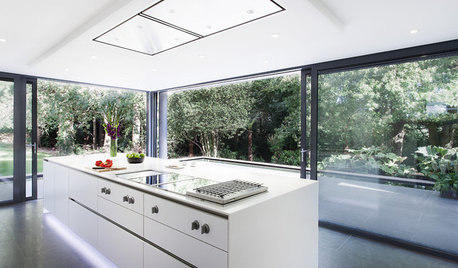
KITCHEN APPLIANCESDisappearing Range Hoods: A New Trend?
Concealed exhaust fans cut visual clutter in the kitchen
Full Story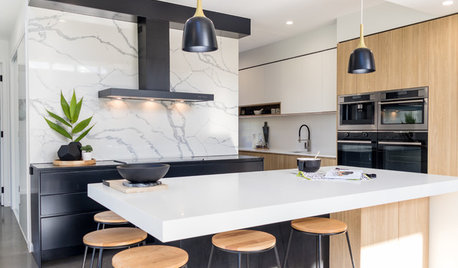
KITCHEN DESIGNHow to Get Your Range Hood Right
Get a handle on the technical specs, and then learn about fun design options for creating a beautiful kitchen feature
Full Story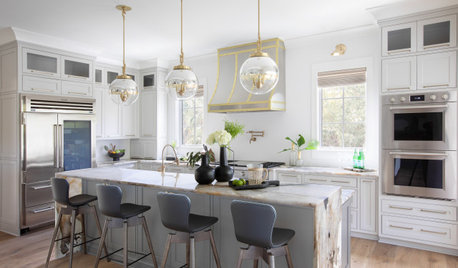
KITCHEN DESIGNDesigner Tips for Range Hoods, Appliances and Lighting
Learn how to get your microwave height just right, what kind of bar stool will be most comfortable and more
Full Story
KITCHEN DESIGNWhat to Know When Choosing a Range Hood
Find out the types of kitchen range hoods available and the options for customized units
Full Story
KITCHEN DESIGNHow to Choose the Right Hood Fan for Your Kitchen
Keep your kitchen clean and your home's air fresh by understanding all the options for ventilating via a hood fan
Full Story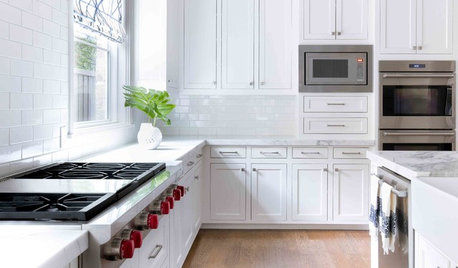
KITCHEN APPLIANCES9 Places to Put the Microwave in Your Kitchen
See the pros and cons of locating your microwave above, below and beyond the counter
Full Story
HOUSEKEEPINGHow to Clean Your Range and Oven
Experts serve up advice on caring for these kitchen appliances, which work extra hard during the holidays
Full Story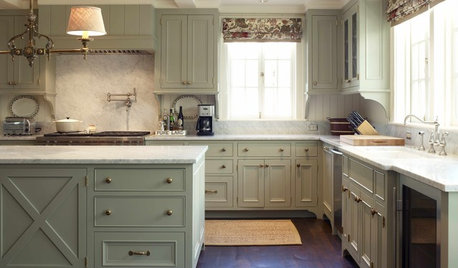
KITCHEN DESIGN9 Ways to Save on Your Kitchen Remodel
A designer shares key areas where you can economize — and still get the kitchen of your dreams
Full Story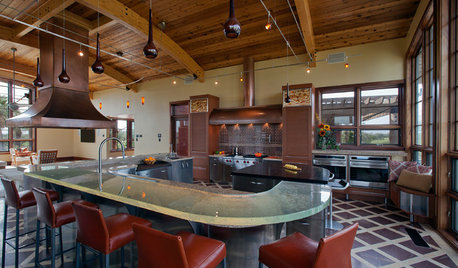
KITCHEN DESIGN9 Award-Winning Kitchens from KBIS 2013 to Drool Over
See top-rated designs from this year's Kitchen and Bath Industry Show and get details about the designers' visions
Full Story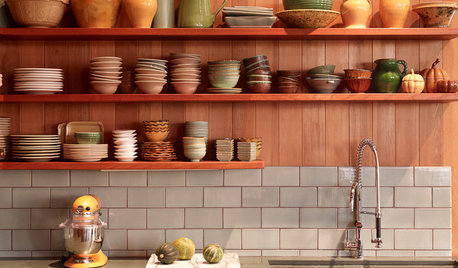
KITCHEN CABINETS9 Ways to Save Money on Kitchen Cabinets
Hold on to more dough without sacrificing style with these cost-saving tips
Full Story






clinresga